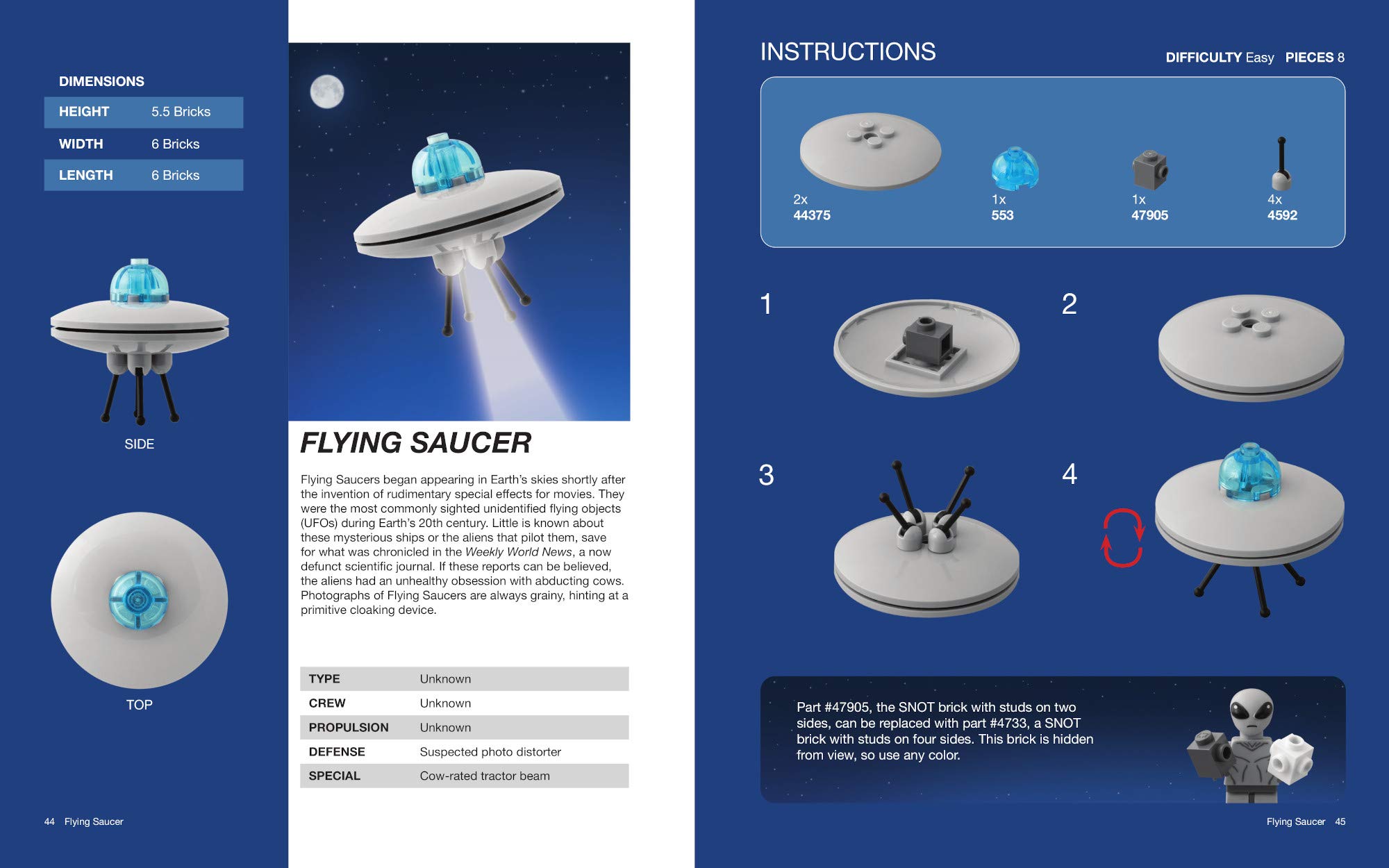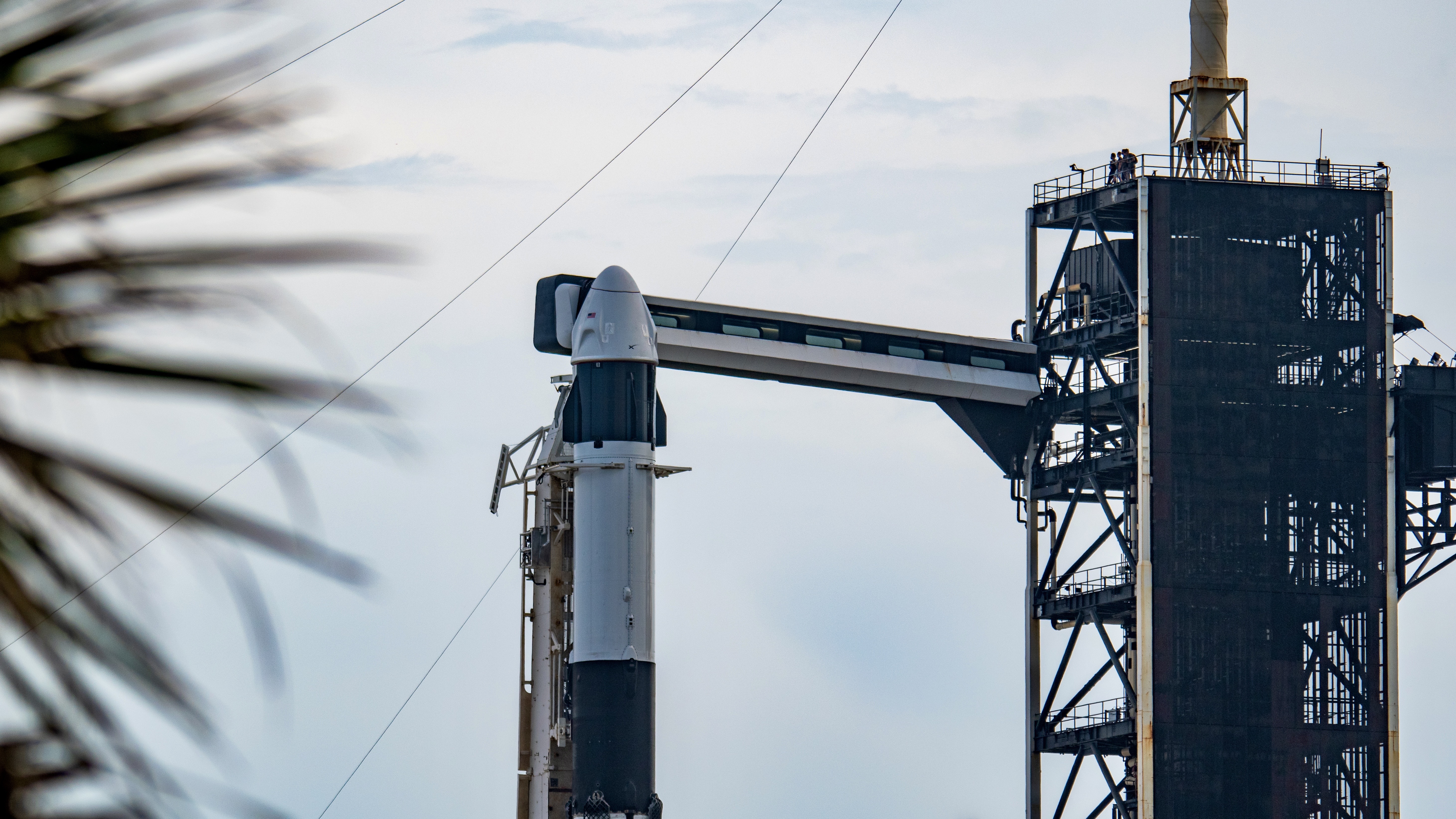Learn how to create extraordinary Lego spacecraft with the 'Lego Space Projects' guidebook
'Lego Space Projects' is available Tuesday (Aug. 17).

Jeff Friesen's latest Lego book, "Lego Space Projects" (No Starch Press, 2021) shows space enthusiasts how to build little spacecraft, from more realistic-looking vessels to science fiction dreamcraft.
The book also includes step-by-step instructions to guide you through the process of transforming your Lego blocks into celestial destinations, ranging from comets to the sun to deep-space experimental drive testing on other worlds.
Friesen's book comes at a time when Lego is releasing ambitious adult-themed sets about famous space machines, ranging from the Apollo lunar lander to the Saturn V moon rocket to the Discovery space shuttle.
Related: Best Lego space sets and deals for 2021
Lego Space Projects (No Starch Press, 2021): Was $19.99 now $17.49 at Amazon.
You can save 13% on Lego Space Projects by Jeff Friesen and build your own brick fleet of spaceships to explore the universe.

But Friesen prefers a more experimental building approach. "I don't actually build Lego sets by their instructions; I usually like to build my own thing," he told Space.com.
Space appeals to Friesen because of his fascination with engineering, he said. He cited Lego's Roman Colosseum set as an example of engineering on a large scale, while Friesen is more interested in the small scale. Space, he said, includes "some of the greatest engineering projects of all time."
"I think great engineering wonders capture people's imagination," he added, "and space captures their imagination even more because that's our new frontier right now, as opposed to discovering new continents."
Get the Space.com Newsletter
Breaking space news, the latest updates on rocket launches, skywatching events and more!
Space.com received a sample of Friesen's book, which begins by explaining that Lego space bricks can be reinterpreted — even in the most simple form — for the basic parts of a spacecraft. Friesen shows that it takes only three small bricks to recreate the fuselage, propulsion system and cockpit of a crewed spacecraft — which the book demonstrates with Lego pieces 4589 (a cone), 3005 (a cube) and 54200 (a glass triangle).
From there, the book assures readers, you can learn to make adaptations of your own. To help you, the book also includes a multi-page set of "greatest bricks for spacecraft," a sample constructable stand upon which you can place your creations, and tips for ordering individual bricks via the online shop website BrickLink. More advanced and confident Lego builders will likely love this stuff.
"I don't build digitally; I built it all with physical pieces," Friesen explained. "Sometimes, instead of going from an idea for a ship, I'll actually start with the pieces and experiment with how they fit together to make something interesting. That was kind of the inspiration for this book, actually, because they [Lego] often build architecture. Because architecture has no moving parts, I put a lot of moving parts into these builds — so the book is also an exploration of how to use parts."
Friesen wrote another book about Lego microbuilds ("Lego Micro Cities," No Starch Press, 2018), and he said that his experiences from that book also came into play in the new book about space. "Micro scale has an additional challenge, because you have to make the few parts that are in each build very meaningful. There are no wasted parts; it's like the microscale is the sort of essence of building. It's like minimalist art, [in that] almost everything has to mean something."
For people who are better with guided instructions — like myself — the book has 52 guided sets of various kinds. Each set has metrics for difficulty and number of pieces, and also includes a list of bricks you'll need to buy or acquire. If you're used to Lego's multi-hundred- or multi-thousand-piece sets, you may find the included sets somewhat minimalistic or, for the easy ones, simplistic — but this also makes the sets fun to adapt. The easier ones are also kid-friendly, which Friesen said is by design.
"If I wrote the book when I was 8 years old, it would all be 'Star Wars' styles," Friesen said when asked to reflect on his own childhood interest in Lego. "But I wanted to make it so that there was a few more civilian crafts, so it wasn't all just warfare in space. I wanted to put some utility crafts of a normal functioning society."
My favorite design of the included sets in my sample was "Bebot," described as "an explorer mecha" that looks almost like a flying Pixar WALL-E. I also enjoyed the concepts for a "bounce buggy" (a rover equipped with "jump jets" for rugged terrain) and a "cloud skimmer" designed to emit no pollution during hypersonic exploration of other planets' atmospheres. I didn't get the chance to construct any of the sets, but the instructions look to me as intuitive as Lego's typical space set books.
Friesen said he is working on another book focused on Lego engineering, which will likely include allusions to real-life space projects like SpaceX's spacecraft or the International Space Station. "People really like engineering projects," he said of his decision to pivot harder in this direction, adding that he plans to bring in some elements from mechanical and structural engineering to the new sets.
Follow Elizabeth Howell on Twitter @howellspace. Follow us on Twitter @Spacedotcom and on Facebook.
Join our Space Forums to keep talking space on the latest missions, night sky and more! And if you have a news tip, correction or comment, let us know at: community@space.com.

Elizabeth Howell (she/her), Ph.D., was a staff writer in the spaceflight channel between 2022 and 2024 specializing in Canadian space news. She was contributing writer for Space.com for 10 years from 2012 to 2024. Elizabeth's reporting includes multiple exclusives with the White House, leading world coverage about a lost-and-found space tomato on the International Space Station, witnessing five human spaceflight launches on two continents, flying parabolic, working inside a spacesuit, and participating in a simulated Mars mission. Her latest book, "Why Am I Taller?" (ECW Press, 2022) is co-written with astronaut Dave Williams.

